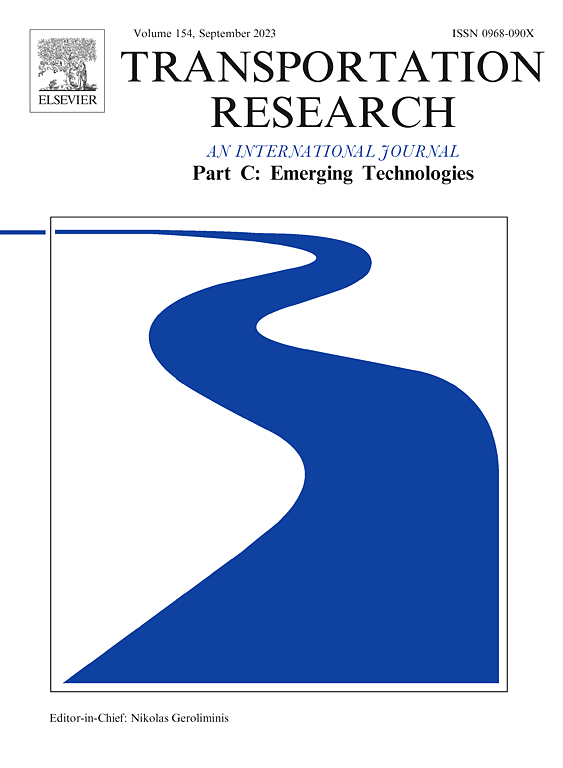Scaling from macro to micro: A novel approach to bridging gaps in multiple pavement texture scales using generative neural networks
IF 7.6
1区 工程技术
Q1 TRANSPORTATION SCIENCE & TECHNOLOGY
Transportation Research Part C-Emerging Technologies
Pub Date : 2025-03-24
DOI:10.1016/j.trc.2025.105108
引用次数: 0
Abstract
Both pavement macrotexture and microtexture impact skid resistance, which is vital to driving safety. Current laser-based texture measurement methods struggle to balance efficiency and accuracy in large-scale surveys. Static laser scanners offer highly precise texture data but slow in operation, while vehicle-mounted 3D lasers work at traffic speeds but are inferior in precision. To address this trade-off, a series of generative neural networks called Pavement Texture Scaling Networks (PTSNs) are introduced to scale pavement texture across both macro and micro scales. PTSNs feature a multi-layer invertible architecture where each layer doubles or halves the texture resolution, progressively upscaling lower-resolution data to the desired level. The model was trained on texture data from four asphalt surface types at ten resolutions and evaluated with six texture descriptors and wavelet coherence (WTC). At scaling factors of 8×, 64×, and 512×, PTSNs achieved mean profile depth errors of 2.98 %, 3.91 %, and 4.99 %, respectively. The actual and predicted texture power spectral densities coincide at macrotexture scales but diverge at finer microtexture scales (wavelength m−1). Additionally, PTSNs’ performance varied over polishing levels, with the highest errors observed on unpolished surfaces and the lowest on highly polished surfaces. The WTC analysis found that actual and predicted textures correlated strongly across the lane at frequencies below 32 kHz. Overall, PTSNs effectively reconstruct multi-resolution texture across scales, bridging the resolution gap and offering a fast, cost-effective alternative for high-precision pavement texture measurement.
求助全文
约1分钟内获得全文
求助全文
来源期刊
CiteScore
15.80
自引率
12.00%
发文量
332
审稿时长
64 days
期刊介绍:
Transportation Research: Part C (TR_C) is dedicated to showcasing high-quality, scholarly research that delves into the development, applications, and implications of transportation systems and emerging technologies. Our focus lies not solely on individual technologies, but rather on their broader implications for the planning, design, operation, control, maintenance, and rehabilitation of transportation systems, services, and components. In essence, the intellectual core of the journal revolves around the transportation aspect rather than the technology itself. We actively encourage the integration of quantitative methods from diverse fields such as operations research, control systems, complex networks, computer science, and artificial intelligence. Join us in exploring the intersection of transportation systems and emerging technologies to drive innovation and progress in the field.

 求助内容:
求助内容: 应助结果提醒方式:
应助结果提醒方式:


